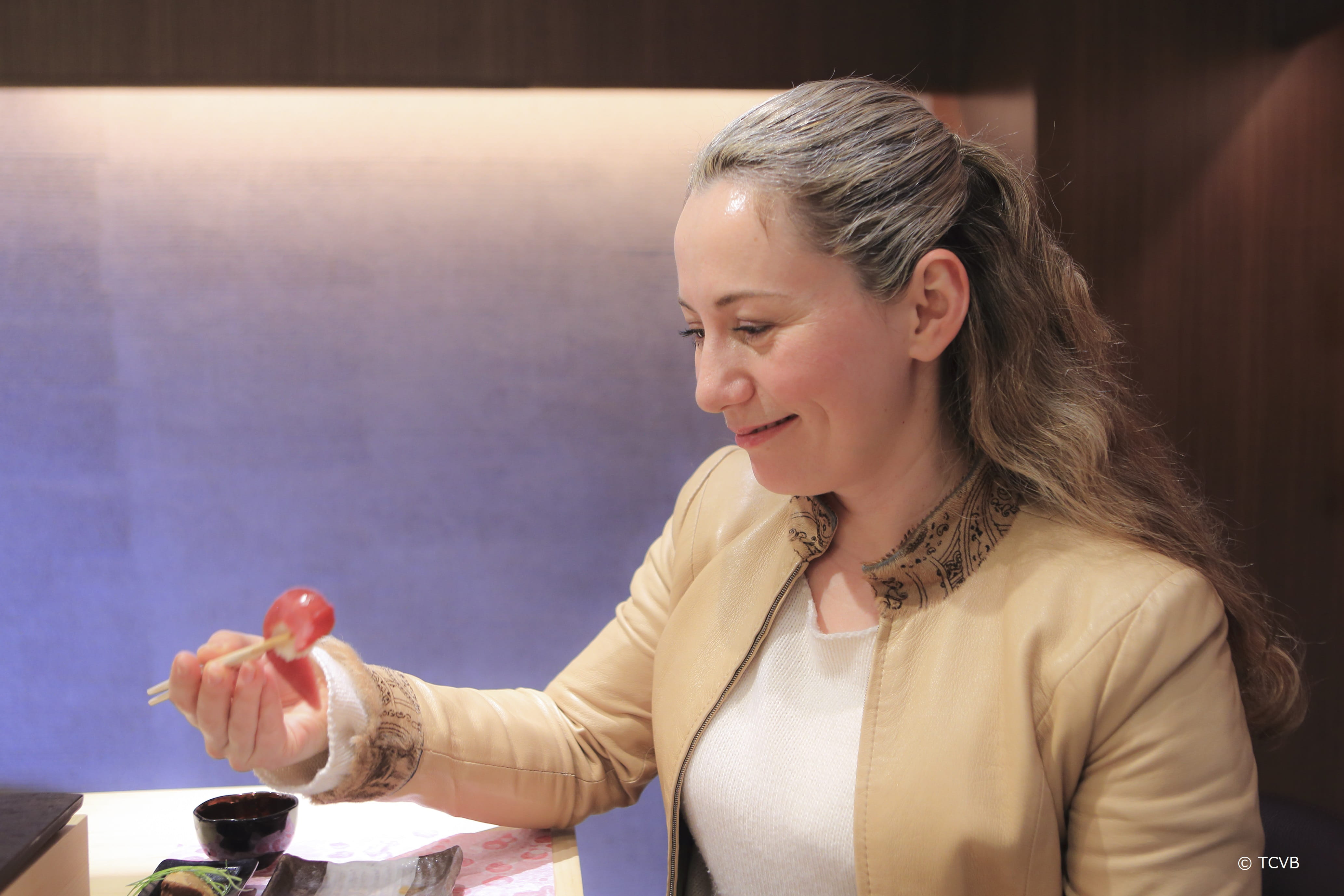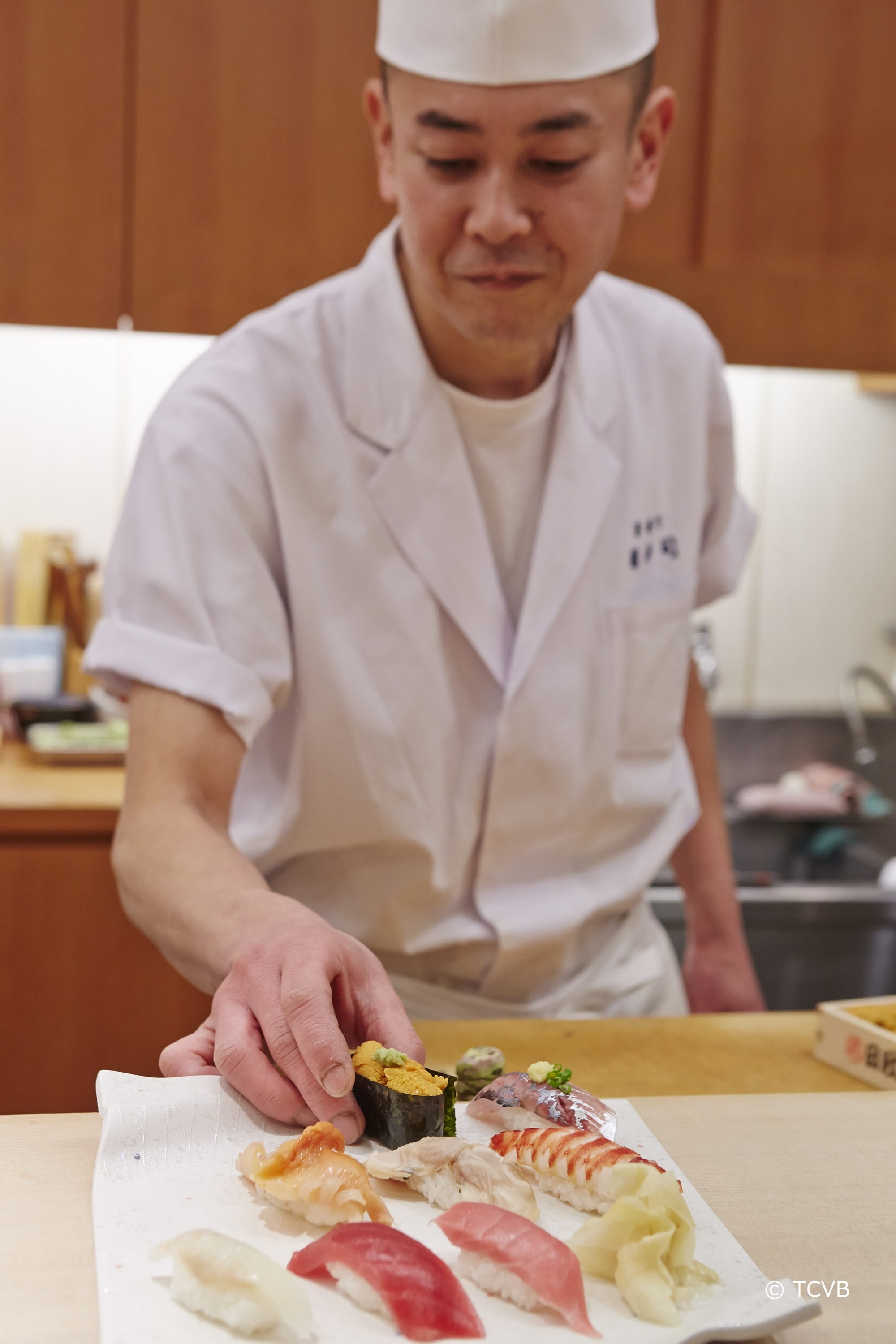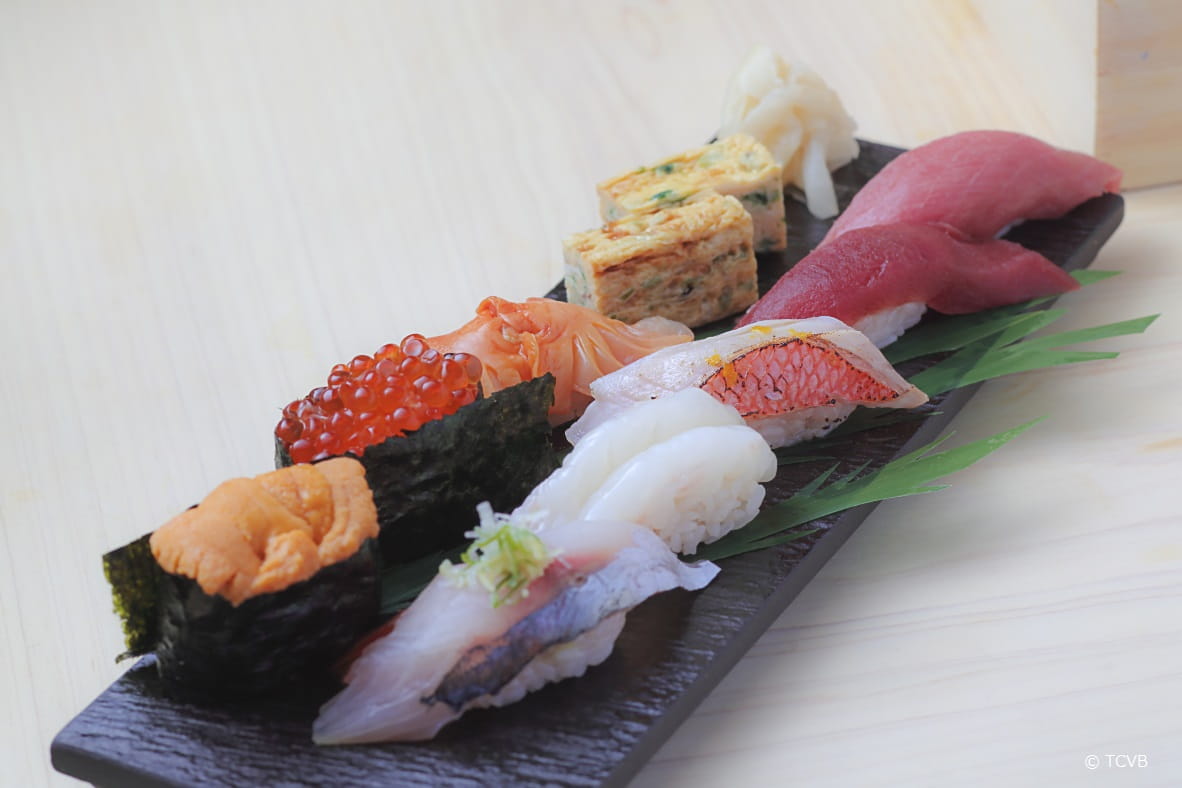Trace the history of sushi in the former capital of Edo, from food stalls to Michelin stars.
While debates over the history of sushi can get as fiery as a large mouthful of wasabi, many agree that the present-day style can be credited to one man, Yohei Hanaya, who developed Edomae sushi. Hanaya is thought to be the first to press neta (toppings) onto vinegared rice by hand to create bite-sized morsels. “Edomae” means “in the Edo style,” as Edo is the former name for Tokyo.



